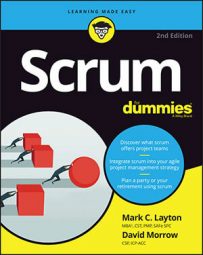- Diligently start on time.
- Conduct the meeting standing up. Studies have shown that meetings conducted standing up are 34 percent shorter than those conducted sitting down. No one has a chance to slump in a chair and relax; it’s as though everyone is already on the move.
- Focus the meeting on coordination, not problem-solving. Impediments get removed after the daily scrum.
When impediments are uncovered in the daily scrum, the scrum master can deal with them by hosting an after party immediately following the daily scrum. This event involves only those who need to be involved and is for addressing any issues that came up during the daily scrum.
A backlog of these “team topics” can also be kept so that the topics can be addressed by the team during the after party when appropriate or during the team retrospective. Not all topics raised during the daily standup need to be addressed that day.
- The scrum master is the meeting facilitator and, as necessary, keeps the meeting on time and on track, and makes sure that only development team members participate. The scrum master’s touch should be as light as possible.
- Cover only immediate issues and priorities in relation to that day in support of the sprint goal.
- Gather around the task board to ensure context and focus.
- Don’t assign a set speaking order because when people know the order they tend to check out until it’s their turn. In some cases, they don’t even show up until just before their turn.
Here’s one example of how you can approach speaking roles. One team tosses a squeaky dog toy to a random member of the development team when that person should speak. If anyone takes too long, try switching to a timer ball with an alarm. An alternative is to toss a ream of paper (which weighs 5 pounds) and let the person talk for as long as he can hold the paper out to his side. These tactics keep the daily scrum fast, forward-moving, and fun.
- Don’t allow vague statements or rely on team members’ memories of what’s in the sprint backlog.

